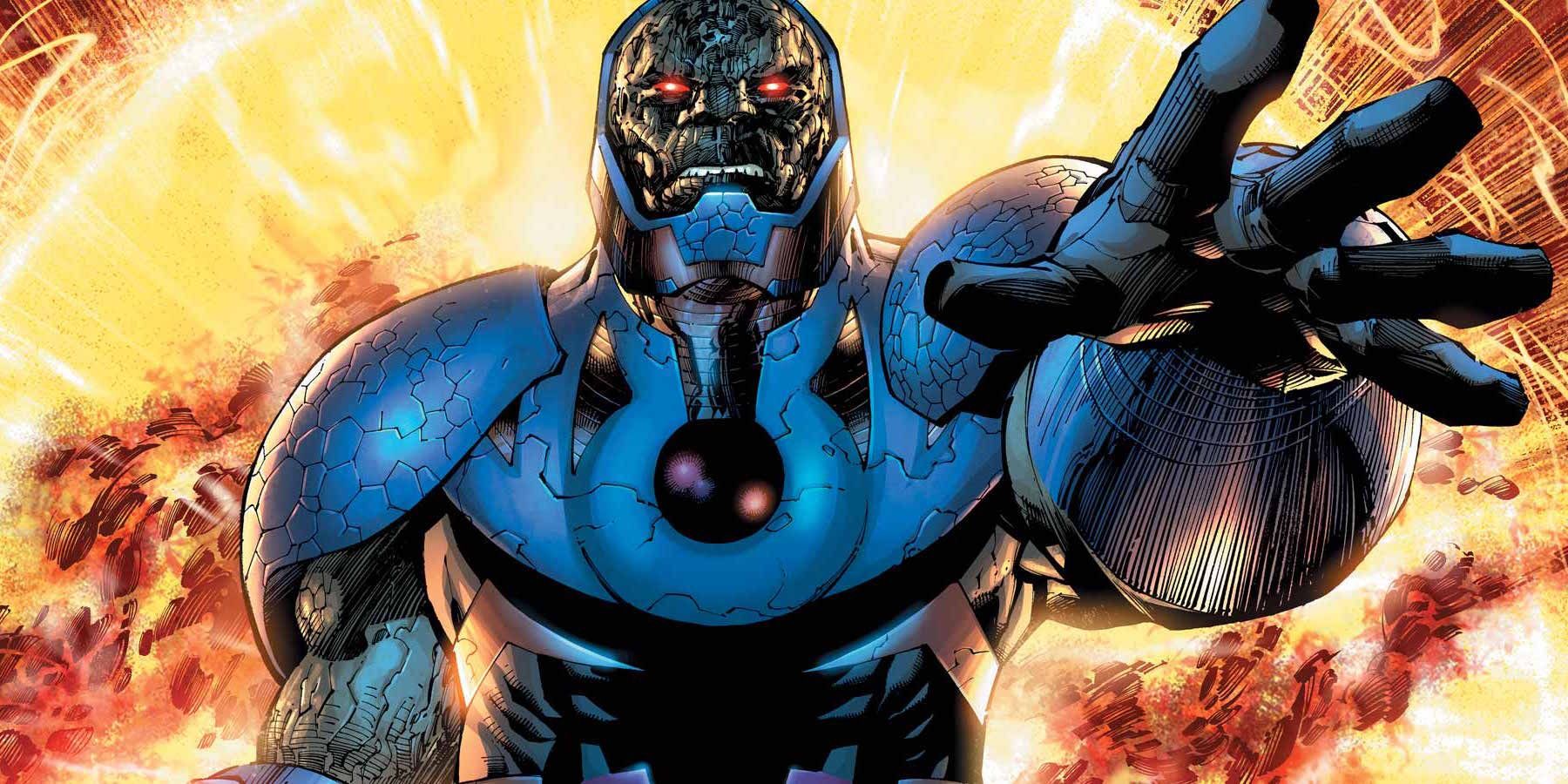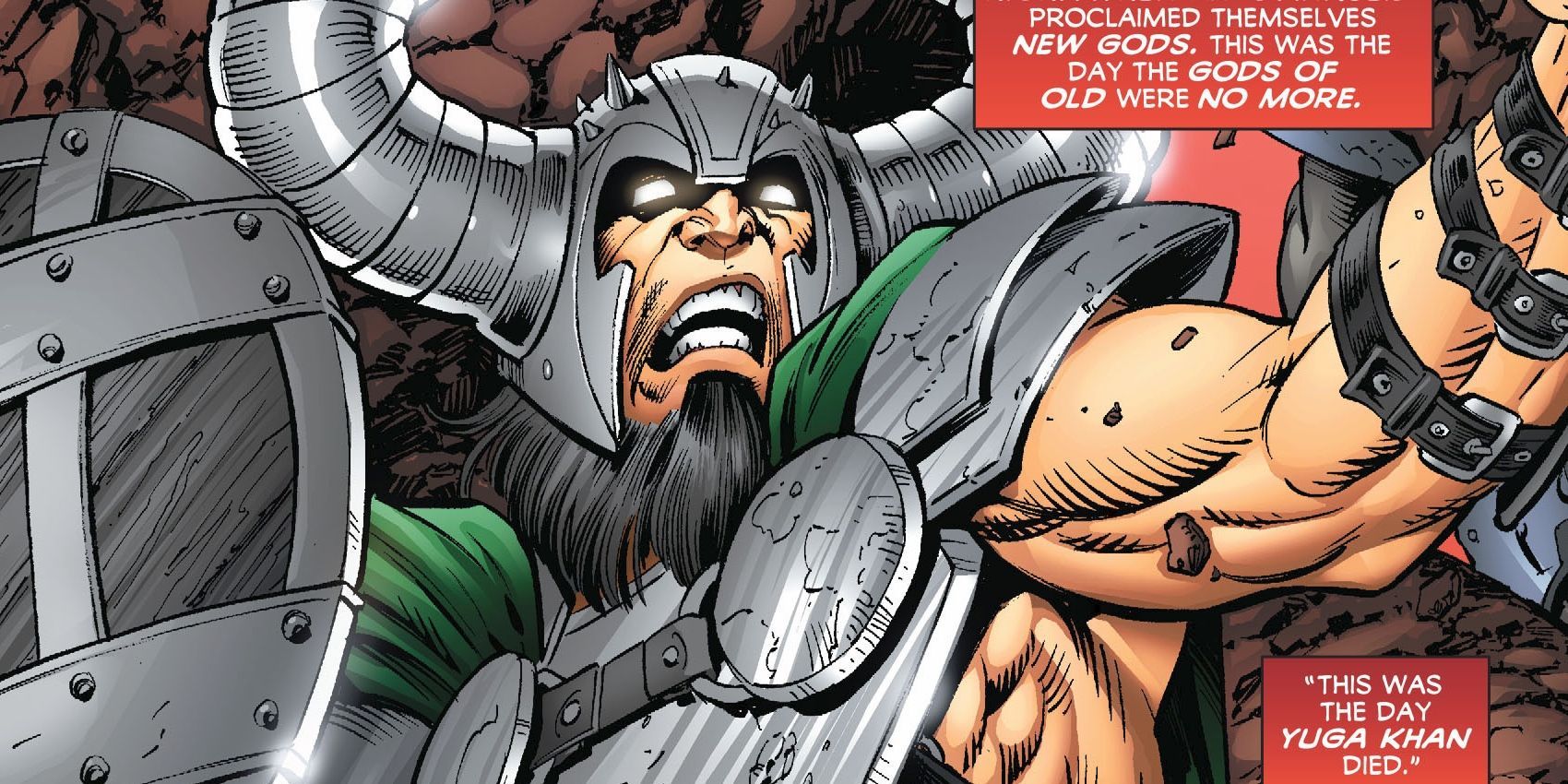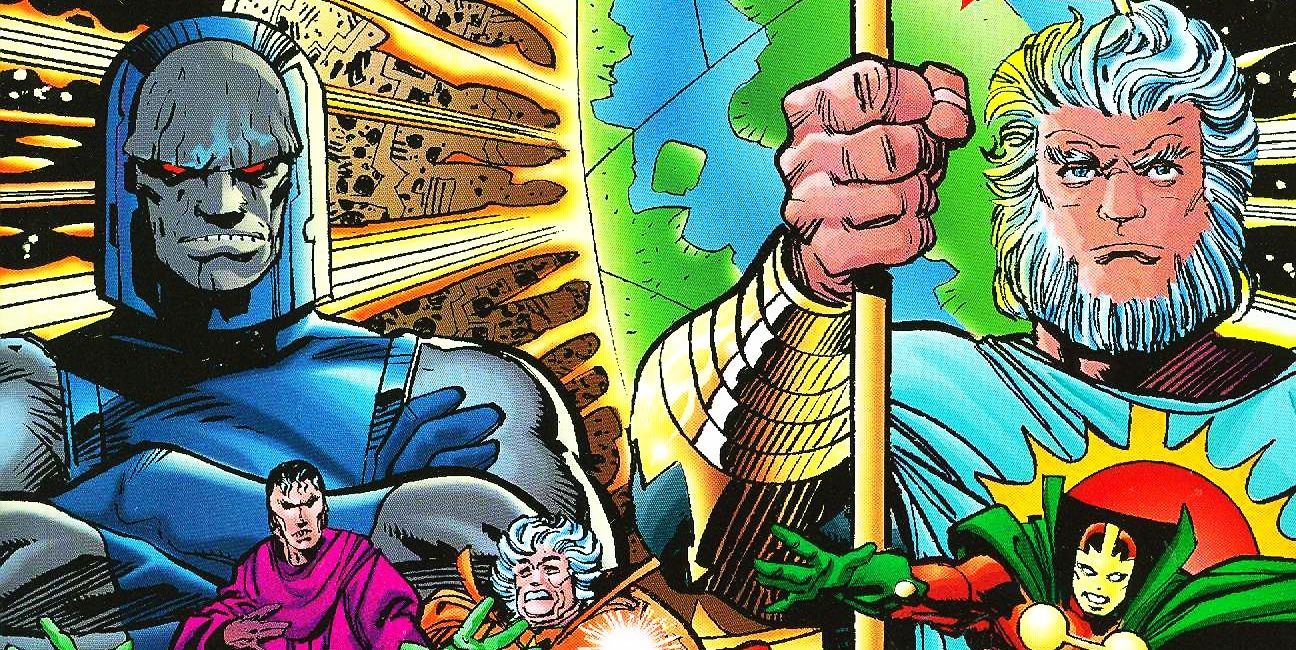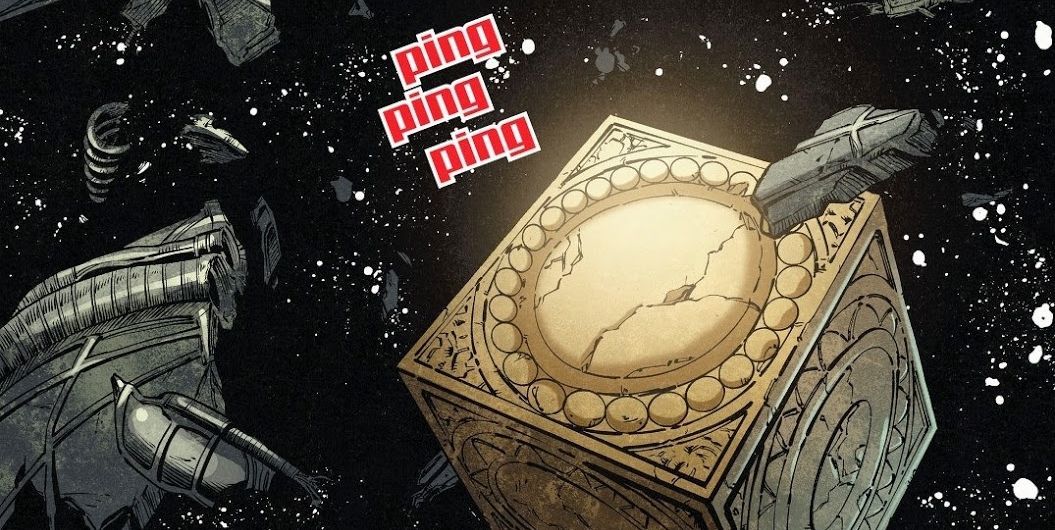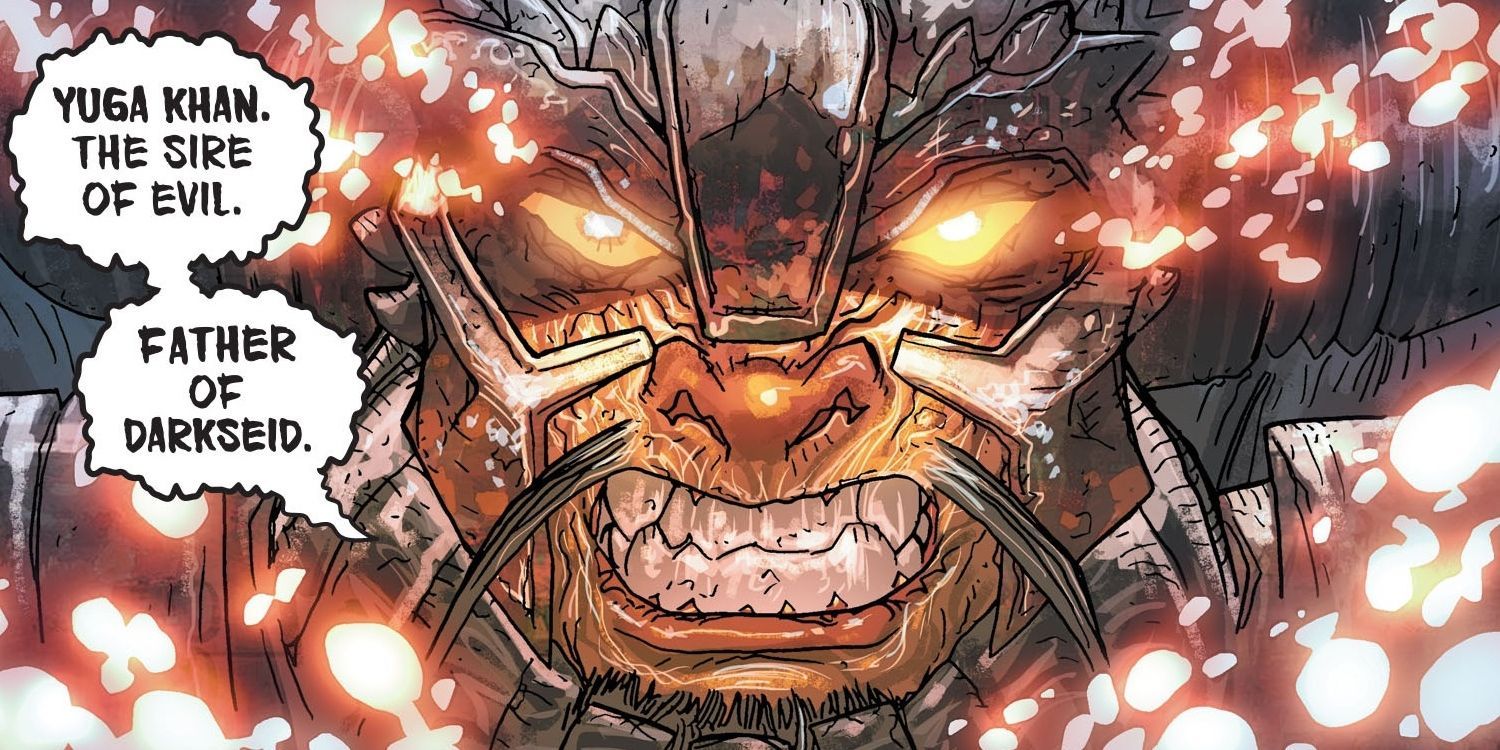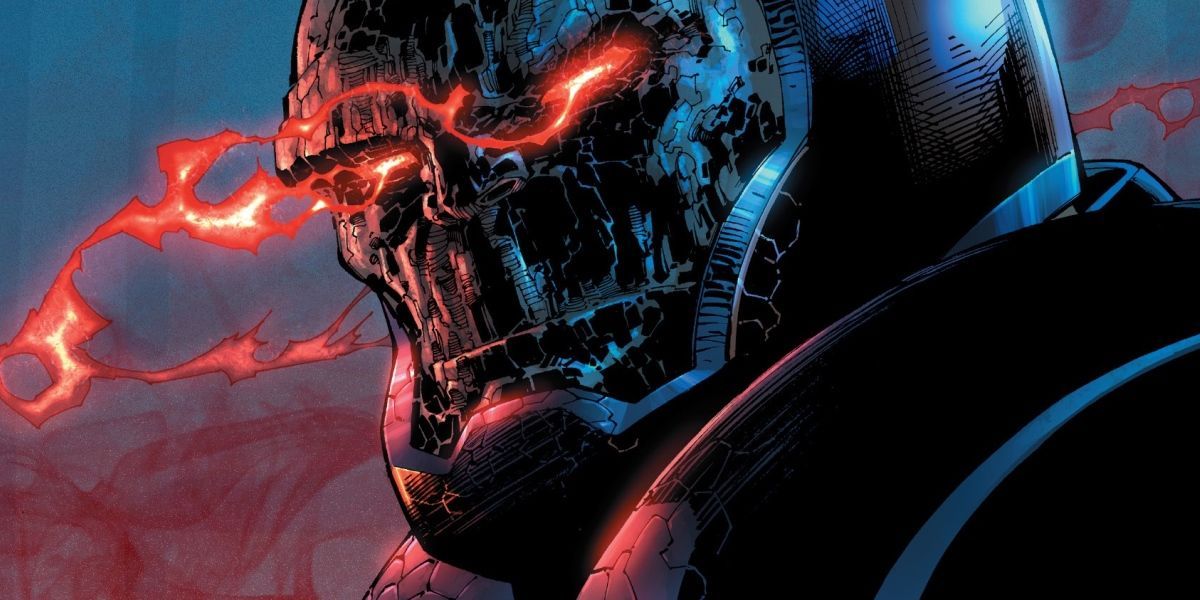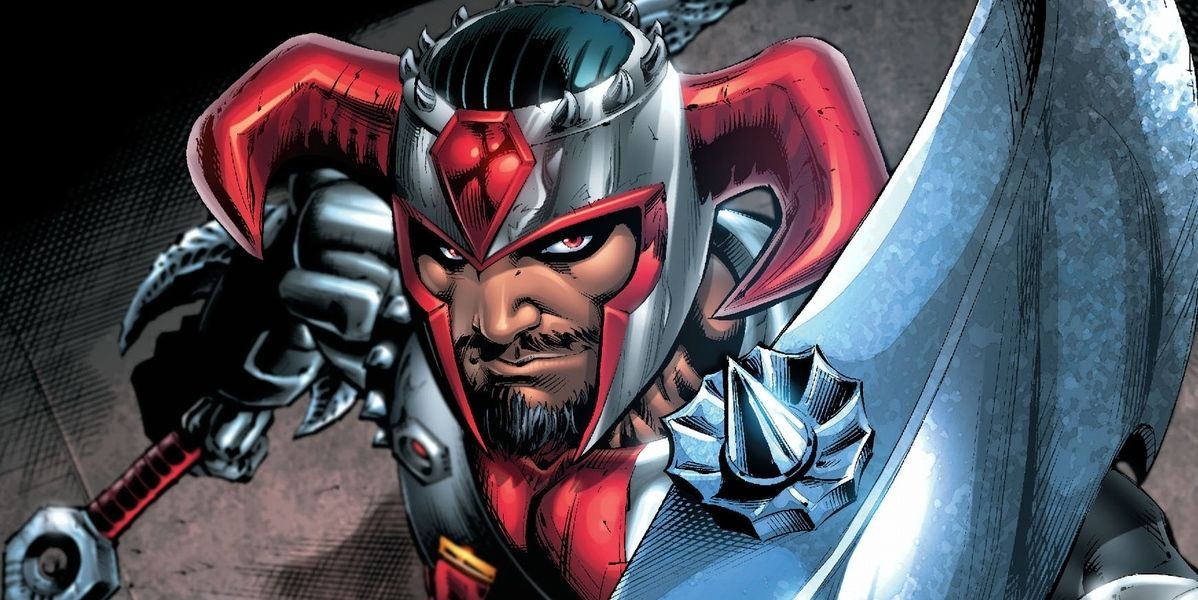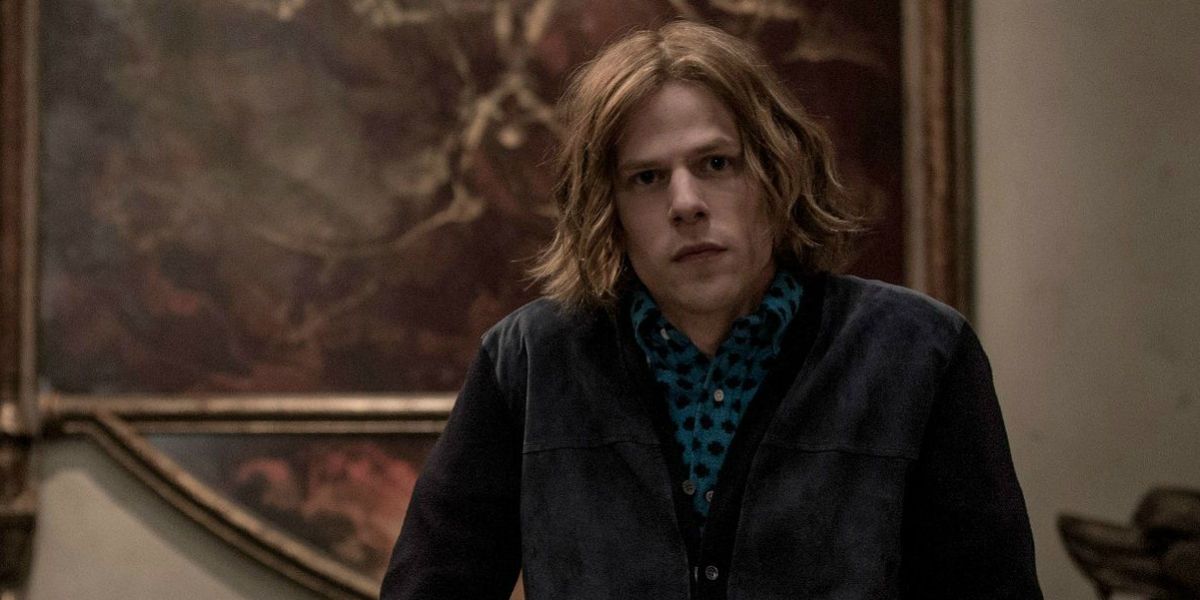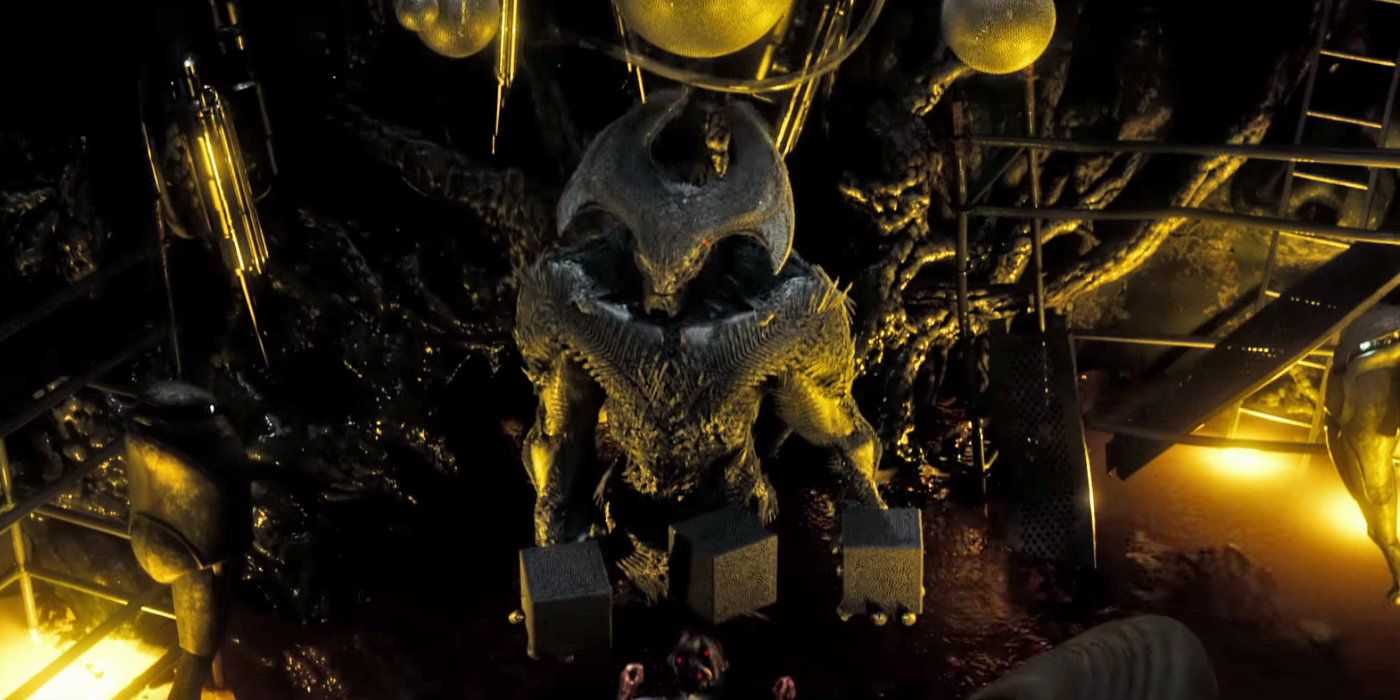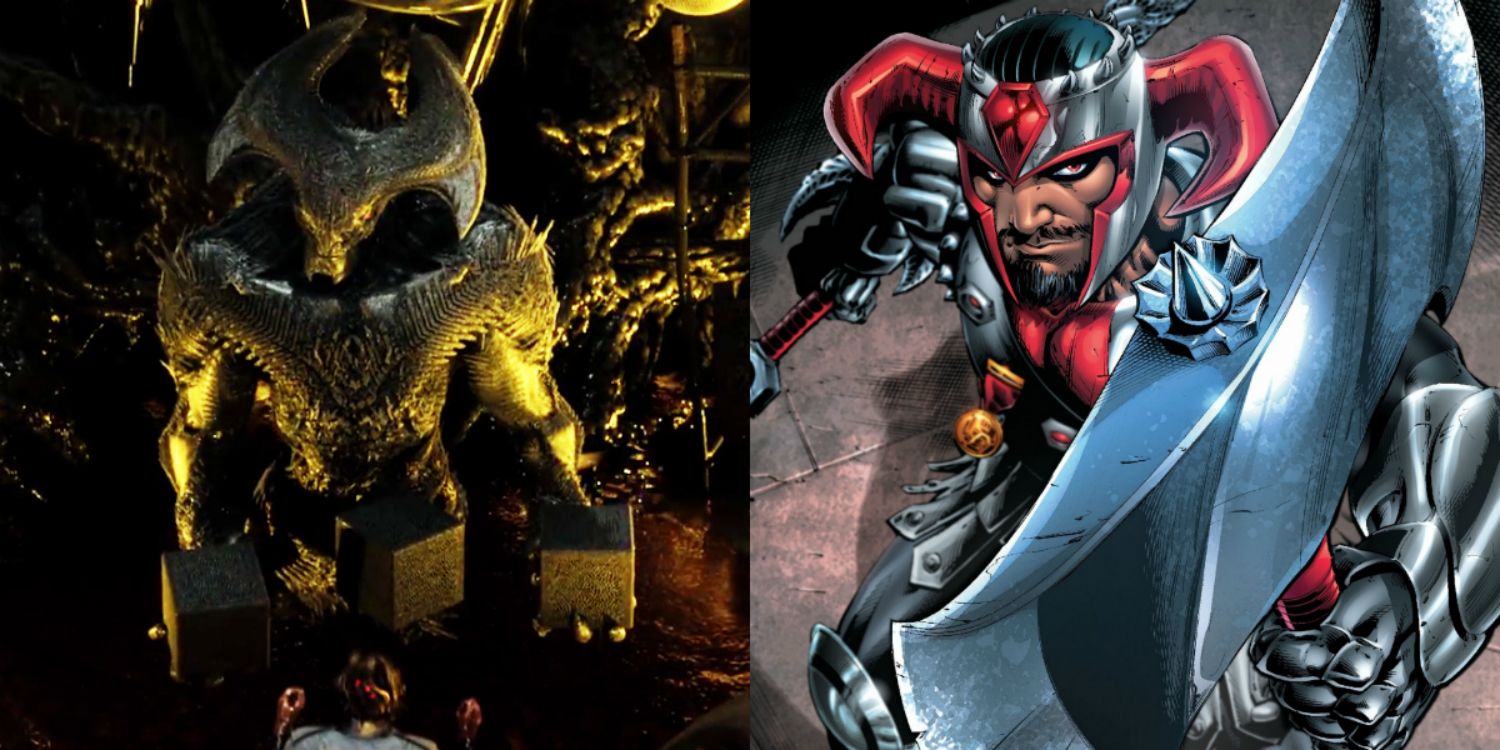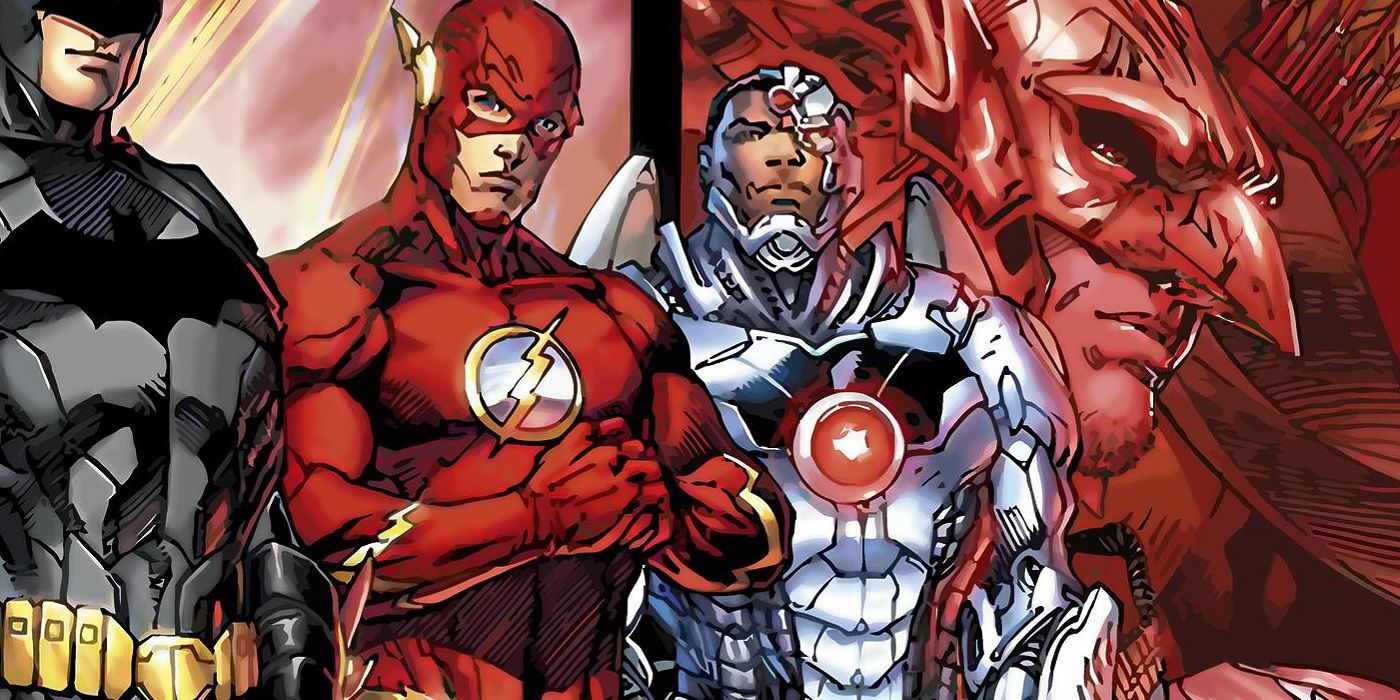Update! Here's our breakdown of Darkseid's role in Zack Snyder's Justice League.
In today's world of comic book blockbusters and shared movie universes, it's impossible to ask that fans be content with the story told in just one installment - a fact that studios seem all too aware of, since every film seems to be capped off with a post-credits scene or blatant teaser meant to get fans asking: what comes next? Thankfully for ravenous fans of Zack Snyder's growing DC Extended Universe - formally launched with Batman V Superman: Dawn of Justice and set to be directly expanded upon with Justice League - fans didn't even need to wait for the credits to roll before the hints started rolling in.
With ominous warnings from both Lex Luthor (Jesse Eisenberg) and Bruce Wayne (Ben Affleck) of an evil force coming to wreak havoc upon Earth, fans didn't take long to anoint the chief DC baddie from the comics, Darkseid, as the most likely candidate. But things changed after a deleted scene surfaced showing Luthor communing with a strange horned beast; a creature, sources and fans soon claimed, was actually either a) Steppenwolf, a soldier of Darkseid, or b) Yuga Khan, Darkseid's father. Either way, it was the same realm of DC Comics' "New Gods": being tapped into for the movie franchise's next conflict (or two).
Comic fans who have taken even a casual stroll into the cosmic side of the DC Comics universe know that things can get complicated fast. Where the Earthbound stories can range from grounded to sci-fi and fantasy, the cosmic can seem downright Biblical, Shakespearean, or simply hard to follow. It's legendary writer and artist Jack Kirby who's to thank for that, with the creation of his "Fourth World", populated by "New Gods" - cosmic beings who may look human, but operate on another level of existence, exhibiting truly godlike powers, responsibilities, and conflicts.
For movie fans curious to know what comic arcs and elements are being adapted, and for comic enthusiasts who have just never been able to make sense of The Fourth World, allow us to start at the beginning of the story. That way, not only can fans spot the characters and technology being teased - but can start making predictions of their own.
The Old Gods
Before you get to the New Gods of Kirby's Fourth World, you have to grasp what came before: The Old Gods, existing on a plane of existence and realm inhabited by beings that saw themselves as gods, in a time before time. Specifically, in a time long before the beginning of DC's own Multiverse - but fans of Greek Mythology will recognize the stories and struggles Kirby was copying (chiefly, Zeus and the Olympian Gods overthrowing the Titans), not to mention lifting elements of Norse Mythology currently being re-imagined in the Asgard of Marvel's Thor series.
It was this world - called by names like Valhalla, or Asgard - that beings large enough to shape, create, drain and manipulate life itself called home; beings able to destroy entire worlds with a finger. Since that power doesn't usually last, these Old Gods wound up in all out war - "Ragnarok" - a bloody battle that saw the Gods fall to each others' hands, before a massive explosion sent their power scattering across space and time. This pulse, known as "the godwave," dispersed energies able to create the Olympian gods whom Wonder Woman worshipped, and other godlike superheroes and villains throughout ancient history.
But the death of the Third World also ushered in a new one, populated by a new group - the New Gods - while shattering the former home of the gods, Urgrund, into two planets.
Apokolips & New Genesis
After DC's take on Norse mythology and religion was blown to pieces, it was replaced by a similar re-imagining of Heaven and Hell, in the form of the two Fourth World planets: Apokolips, and New Genesis. The latter was a paradise, inhabited by immortal "Forever People", where free will and peace was encouraged by its ruler, the Highfather. The former, a fiery, toxic ball of stone where its inhabitants were ruled through force, creating engines of war (and misery) in the name of a malicious monarch almost always bent on conquering the known universes.
Over the years, and through countless changes and retcons to DC Comics continuity, the relationship of the two rulers has changed, with Apokolips' armies succeeding in destroying New Genesis just as often as they failed. But the division between light and dark, good and evil, free will and domination have come to be one of, if not the biggest theme in Fourth World characters and storylines. Why this plane was divided into two opposite worlds is hard to explain, but what we DO know is why these beings are as powerful, immortal, and godlike as they seem to be.
The Source
The beings of the Fourth World, like the Third before them, gain their unique physiology and abilities because their realm exists closer to The Source, the sentient energy that exists beyond the edge of the known universe. It's as abstract an idea as it gets, and while a few comics have shown characters actually encountering the mysterious source, it's best understood as a "god" or "creator" energy like those of most modern religions or traditions. By existing so close to The Source, the New Gods and Old Gods received more of its gifts - not just limited to personal powers of immortality either, but the sentient/divine A.I. personal devices worn by most Fourth World residents known as "Mother Boxes".
As a general rule, while the powers and wisdom of the Source can be used through these devices, crossing into the Source is impossible as it exists behind The Source Wall, a literal wall at the edge of DC's space constructed out of the souls of past gods... as well as the bodies of those foolish enough to try to breach it in search of the true meaning of the universe or even life itself (a group including Darkseid and even Lex Luthor). And to be honest, it wouldn't take more than a few minutes witnessing what magic a Mother Box can pull off, before nearly anyone would need to know from where that power came from.
Here is where the mythology of The Source, The Fourth World, and the Mother Box starts to become highly relevant to the DC Extended Universe. Because not every Old God was killed in Ragnarok - one was just locked away in the Source Wall itself.
Yuga Khan
If the New Gods are invincible, then Yuga Khan, an even older, more powerful, more gifted god is possibly the most powerful character in DC Comics lore. Surviving the armageddon on Urgrund to reign as the leader of Apokolips after its fall, Yuga Khan and his wife, Queen Heggra set about building an empire. As they raised two sons - Drax, the eldest, and his younger brother Uxas - Yuga Khan's desire to unlock the secrets of The Source all for himself grew, as he hoped to conquer not just these other New Gods but all of creation.
When that thirst led him to approach the Source Wall and, like countless others before, become trapped, it left the door wide open for his family on Apokolips to spin completely out of control. Since Heggra didn't like her youngest son Uxas falling in love with a kind Apokoliptian, she had the potential bride poisoned, leading her son to become crueler than ever, taking a cruel wife and having his mother poisoned and killed not long after. Completely devoid of compassion or love, Uxas then murdered his brother to claim the throne for himself, along with the deadly Omega Effect as his new weapon.
Taking the throne with more power than any New God left alive, he set his sights on not just one world, or a universe, but the DC Multiverse completely. And he took a new name for himself in the process...
Darkseid
The ruler formerly known as Uxas was set on the path to becoming the great comic book supervillain fans know him to be. Ruthless, power hungry, and nearly impossible to truly defeat, Darkseid was focused on more immediate, cruel results than the secret of The Source that consumed his father. When Darkseid learned of a "Life Equation" (a formula and basis for all free life in the universe), he deduced that an "Anti-Life Equation" must also exist. In the years since, Darkseid sought the equation among the subconscious of human beings, as the perfect weapon to dominate and crush all life in the universe... which is usually where the Justice League comes in to stop him.
Since Darkseid is impossible to harm or even kill (even if his form is damaged, he exists as an energetic being outside of it), and is larger than entire planets in his natural form, Superman and the League are usually only capable of keeping his forces at bay, or ruining his plans for world domination. With neatly every superpower imaginable - most famously his Omega Beams, fired from his eyes and capable of turning almost anything to ash - the idea that he would be the chosen villain to take on the Justice League being formed on film seems like a bold choice.
In the comics, the only person capable of truly besting Darkseid was his father Yuga Khan, proving even more powerful than assumed by escaping the Source Wall in a weakened state, all by himself. He swallowed up entire worlds to regain his strength before reclaiming the throne of Apokolips. So, no matter how bad Darkseid may be... Yuga Khan is worse.
Steppenwolf
Although you would usually expect an assassination story to include a brother out for revenge, that isn't the case for Apokolips. Steppenwolf, brother to Yuga Khan, may have taken issue with the way Darkseid came to power, but he couldn't argue with the results. And once Darkseid started his campaign to rule the universe, it wasn't long before he appointed his uncle Steppenwolf as a leader of the Elite Army, commanding not only soldiers, but ranks of giant dogs to be ridden into battle by those same soldiers.
Unfortunately for some conspiracy theorists/DCEU preditors, that's basically where Steppenwolf's story begins and ends. In DC's New 52 continuity he plays a larger role in murdering Wonder Woman, but... we don't expect that storyline to be carried over (especially not after Batman V Superman killed off one of the two title heroes).
Batman V Superman Hints
It should be clear that Darkseid puts other "big bads" of the DC Universe to shame, and when the New 52 Reboot of the Justice League used an invasion by Darkseid's parademon forces to unite the League heroes in defense, it made sense that the movies might do the same. Even so, it was shocking to see Batman V Superman feature a dream sequence of Bruce Wayne's in which Earth had been turned into a fire-spewing colony of Apokolips, scarred with Darkseid's Omega symbol, and swarmed by parademons.
Even more shocking was an appearance by The Flash (Ezra Miller) from the future, warning Bruce to unite the League to, perhaps, stop such an Apokoliptian victory from happening. But the final scene took the cake, when Lex Luthor was left giving a frantic warning - or perhaps promise - to Bruce Wayne that the death of Superman was "a bell heard among the stars" and, with a god now dead, the cryptic warning that "he is coming."
It makes perfect sense to introduce Darkseid as a cosmic villain now ready to strike with Earth's mightiest protector dead. And to be honest, casual movie audiences don't need to know Darkseid's personal and family history, or the technology of Apokolips to appreciate it. But that assumption all changed when the first deleted scene, hopefully to be seen in its original place in the unrated, extended cut of the movie, showed a bit more of Lex Luthor's history lesson in the crashed Kryptonian scout ship.
The metallic hologram used in Kryptonian systems scatters when Lex is discovered by an armed security team, but with everything we've covered from Darkseid and Apokolips' history, viewers should now have a much clearer idea of just what they, and Lex, were looking at. The demonic, horned creature may seem more at home in DOOM than a Superman story, but comparing it to comic art, it's a dead ringer for a (slightly) updated, more alien and demonic version of Yuga Khan. He's not the only possible character who shares a loose similarity, since both he and Steppenwolf are typically sporting horned helmets, but what he holds before him helps confirm the identity. After all, who else would be seen presenting not one, but three boxes as part of the instruction to Luthor?
Now in the comics, a Mother Box (powered by The Source) is a bit easier to spot. But the similar history lesson seen in Man of Steel showed just as rough a visual style. And lest we forget, audiences got a very good look at one of the devices earlier in the movie. Cyborg was essentially brought to life by one, which may or may not have sent out a signal to someone, somewhere in the universe. But even if the Mother Boxes being held in the hologram can be taken as exactly what they seem, the ongoing parade of insider scoops and spoilers seems to be contradicting itself where the sequel is concerned.
For starters: yes, it would make sense for Steppenwolf to emerge as a direct villain or opponent for the Justice League, especially if the rumors are true that the Mother Boxes in the hologram's hands represent three Mother Boxes left behind on Earth from millenia in the past. But sketchy details or half-formed notions make the storyline seem a bit different from the actual source material - meaning Zack Snyder is completely changing the mythology at work, or a little knowledge of DC Comics lore and creativity are skewing the facts. On Apokolips and New Genesis, Mother Boxes aren't usually treated as rarities - meaning if three were left behind on Earth, they were left behind for a reason... or by total coincidence.
Steppenwolf, Justice League Villain?
First of all, the fact that Steppenwolf somehow rose to the top of the list of characters being depicted as a horned demon is a little baffling: not only is he just a man wearing a (different) helmet, but his importance in terms of Apokoliptian war is not at all what some bloggers are claiming. He is a soldier of Darkseid first and foremost - meaning it would be that character pulling the strings of the movie, if any. It's possible Steppenwolf will simply act as Darkseid's advance warrior, softening up an invasion of Earth that his father failed at (hence the boxes left behind).
Consider it as a similar structure to The Avengers at most: Loki appears to be the big bad of the story, but the film never hid the fact that he was simply serving a larger, more powerful villain with a grander scheme. We certainly wouldn't expect Darkseid to remain out of the action for the better part of a decade, as well, since nearly all reports claim he'll be showing up in person in the Justice League's second parter. But if Darkseid isn't expected to be portrayed as a non-humanoid monster, then it doesn't make much sense for Steppenwolf to be, either.
That means that creature in the hologram - the one informing Lex Luthor about the three ancient relics left somewhere on Earth, and most definitely not humanoid - is more likely one of the Old Gods. From where we're standing, the simplest explanation seems the most likely: Yuga Khan attempted to conquer Earth, but was stopped (as depicted in the history lesson). Darkseid seeks to do the same, and sends forth a general before taking the field himself.
Cyborg's Role
The most pivotal player among the League, considering the sizable emphasis on Apokoliptian technology, will be Cyborg - an obvious role, since the movie universe is picking up on the same fiction of DC Comics (most notably, the New 52 origin story). In the comics, an Apokoliptian Mother Box was used to bring Vic Stone's cybernetic self to life, granting him (eventual) control over the New Gods' 'Boom Tube' teleportation. In the film, the brief introduction to Cyborg showed one such Mother Box bringing him to life almost singlehandedly.
In the comics, his struggle to overcome his near-death experience, and grapple with his new form and mission made up most of his arc among the Justice League, and the same should be expected from the film version. To be blunt, it's the only real reason that he's necessary to the team; a fact that allows him the motive and means to become a true hero in his own right.
And since it makes both him and The Flash men with greatness thrust upon them, grappling to use their powers for good, the bond apparently planned between the two makes perfect sense (once this Darkseid/Apokolips/New God drama is over with, of course).
Next: Justice League Prologue & Backstory Revealed?
Batman V Superman: Dawn of Justice is now playing in U.S. theaters. Suicide Squad will arrive on August 5, 2016, followed by Wonder Woman on June 2, 2017; Justice League Part One on November 17, 2017; The Flash on March 16, 2018; Aquaman on July 27, 2018; an untitled DC Film on October 5, 2018; Shazam on April 5, 2019; Justice League Part Two on June 14, 2019; an untitled DC film on November 1, 2019; Cyborg on April 3, 2020; and Green Lantern Corps on July 24, 2020.

